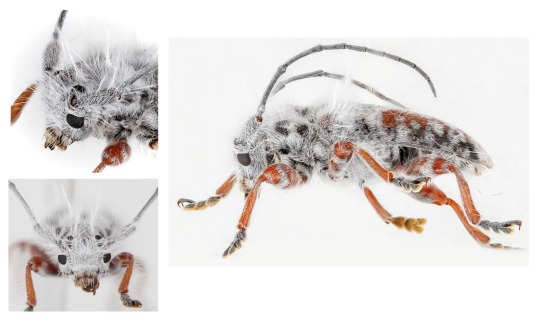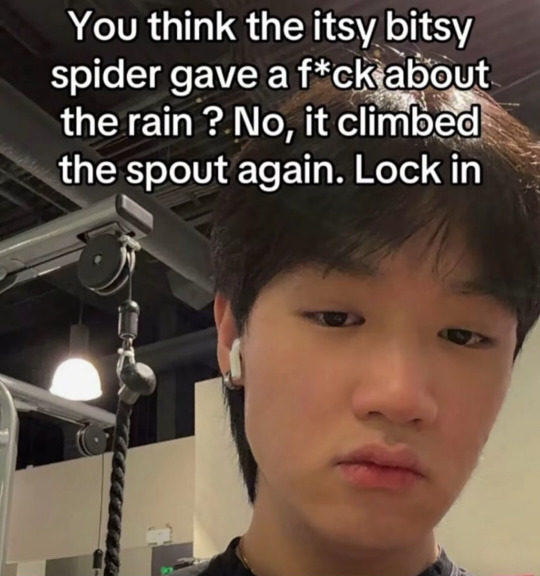Text
The Great Gatsby 2 … they thought he was dead… ……..but they rebuilt him… …faster … stronger … smarter… old sports die hard In The Great Gatling-Gunsby West Egg is about to be Scrambled
258K notes
·
View notes
Note
A big help, thanks!
https://www.tumblr.com/thydungeongal/769949043465093120/i-often-see-this-when-people-air-out-their
What do “dramatic, personal stakes” look like in tabletop gaming? What games center them in their mechanics and how?
Alright, so there are lots and lots of games out there that do this in very different ways, so this is going to be a very long and meandering answer.
Starting with the most "trad" example, Pendragon, the game of playing knights in Arthurian Britain that freely mixes history and myth, is for the most part a very traditional adventure game, but it also introduced the idea of Passions and Personality Traits to give mechanical heft to characterization. These are effectively measured on the same 1 to 20 scale as regular skills and attributes in the game, meaning that they can be "tested" just like skills, but they also have the potential for putting the player character into trouble. A character with the "Hates Saxons" Passion will have their hate actually manifest in play, whereas a character who is high in Lustful and low in Chaste will find themselves entangled in lots of romantic drama. Character personality will thus actually have concrete game mechanical effects. The Passions system has since been ported into more recent editions of RuneQuest and its descendants, including Mythras.
Fate is a more modern indie RPG that is less concerned with measuring out Exact Statistics and more about modeling narrative convention. Fate characters are, more so than their skills, basically defined by their Aspects, which are effectively narrative tags that define How a character should behave in a story and What sort of stuff should be happening to them. Aspects can be invoked (using Fate points, the game's main meta currency that the whole game operates on) for bonuses on actions that relate to that tag, but they can also be compelled to put the character into trouble in a way that makes sense for their Aspect, thus granting the player a Fate point if they accept the compel. Aspects are pretty much at the core of Fate and they are utilized for much more than just characterization: new temporary aspects can be created on the fly to represent things in the environment, aspects can be used to represent things in the world and the wider narrative, injuries and consequences of losing conflicts are effectively temporary aspects, and so on. This way the game is largely one where the meta resource management game ties heavily into things that matter in the fiction.
Eureka: Investigative Urban Fantasy (by @anim-ttrpgs) is another very trad RPG and a game that is very much a "going on an adventure" game (but the adventure is a mystery that needs to be investigated), but the game adds a bit of extra mechanical heft to characterization of make it clear that the game is about regular people investigating mysteries: the Trait system is one of the most important mechanical dials for character customization and Traits are effectively packaged options with both benefits and drawbacks, and those mechanical effects also inform characterization very heavily; Truths are unique to each investigator and are something I would compare to Fate's Aspects but much more precise and personal and less meta, giving investigators minor bonuses on actions in a scene when they are acting according to their Truth; and finally, Tiers of Fear, which are also very personal to each investigator, define how an investigator reacts to various fear stimuli that exist in the world and thus also heavily intersect with the game's Composure mechanic. All of these mechanics interact with an investigative game with a very clear intended gameplay experience to further influence characterization and add personal stakes into the narrative.
Getting back to the more avant garde, Chuubo's Marvelous Wish-Granting Engine is a game that I still struggle to wrap my head around because it's a game for smart people, but as far as I have understood: the gameplay largely revolves around player characters choosing personal goals called Arcs which are further divided into Quests; each Quest is defined as a number of experience points that must be accrued towards the quest for it to be completed, as well as specific actions that characters can do to gain bonus experience on those quests, and then you basically just. Let your characters loose on quests. The important thing is that while quests can be shared among a group (for a more traditional "Group of Heroes Going on an Adventure" narrative, which Chuubo's does also support) they are also personal (so each character will have their own personal quests they will be working towards) and asynchronous (a character may pick up multiple quests over their arc and not complete them in the same order as they started them, as some will be shorter diversions on the path towards victory). Again, this is a very broad-strokes, top-down view of how the game works, because it is a very heady game that I have yet to wrap my head around. If any Chuubo's fans notice any egregious omissions or mistakes here, please let me know.
Finally I'll finish with something a bit broader, the World of Darkness "series" of games, while not having anything quite as in-depth as personality mechanics, do all have various mechanical frameworks for tying characterization into gameplay: the Classic World of Darkness games had their Archetypes, effectively defining a broad personality archetype that the character needs to act according to in order to regain Willpower; the Chronicles of Darkness games have Vices and Virtues, with characters having one of each, once again defining how they regain Willpower; and I'm sure the newer Paradox White Wolf titles also have something to that effect as well. Basically, little carrots dangled in front of player characters to encourage characterization and acting according to a specific archetype. It's neat!
124 notes
·
View notes
Text
can you reblog a two-part post in the correct order?

104K notes
·
View notes
Text
shoutout to flags that look like landscapes fr gotta be one of my favorite genders




96K notes
·
View notes
Text
my mom just had a 7cm brain tumor removed and since she's woken up she's been talking nonstop about this dream she had about going to an art gallery full of colourful paintings by a 'homosexual artist' named klimsdorf who was ethereal and wise, both young and old... at first she was convinced he was a real person but after failing to find him online she's accepted he was a figment of her subconscious mind and is now determined to bring him to life via painting his portrait herself. she's 67 and has never drawn in her life. and now this. blorbo from her tumor
173K notes
·
View notes
Photo





Read more about trilobite beetles and larva here!
Photos by melvynyeo
59K notes
·
View notes
Text
Y’all, I am SO excited about this new beetle that was just discovered!!!!


The freshly-discovered new species of longhorn beetle, Excastra albopilosa. Image credit: James Tweed

Detailed photographs of the Excastra albopilosa specimen found by James Tweed. Image credits: Lingzi Zhou, Australian National Insect Collection
8K notes
·
View notes
Text
what do we think the lil scritches on dragon ball character's cheeks are meant to represent
cheekbones? lower eyelids? blush? shadow?

20K notes
·
View notes








